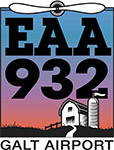Crosswind landings and takeoffs are required any time the wind is not directly aligned with an available runway heading. Even at larger airports with multiple runways the winds are rarely exactly aligned with any of the runways.
But why do we care? Compensating for crosswinds with aileron correction is necessary to prevent an aircraft from being blown sideways on takeoffs and landings. It is important to know how much crosswind you are dealing with in order to determine whether it exceeds your experience and capabilities and whether it is within your aircraft’s limitations. Even light crosswinds can be challenging for some aircraft and for pilots who are not proficient with crosswind takeoffs and landings.
Let’s look at an example at an airport with runways 33/15, 10/28 and 2/20 and the winds are from 240 degrees at 11 knots; there is a crosswind on every runway. Runway 33 has the highest crosswind component of 11 knots and 20 and 28 both have a 7 knot crosswind.
There are various ways to calculate the crosswind component and the best runway for the wind. These days the easiest way is to use an app on your smart phone or tablet! If you use ForeFlight you will know that this app calculates the headwind and crosswind components for each runway based on the latest METAR and suggests the runway with the best wind. However, this may or may not be the most appropriate runway for your aircraft, if for example, the best wind is aligned with a shorter runway and you require a longer takeoff distance. But if an airport does not report weather, this information will be missing from the runways tab.
There are other apps, such as HMC Crosswind Calculator for iPhones and iPads or FlightWinds for Android phones, that allow you to manually enter runways, wind direction and velocity to determine a crosswind component.
If you are old school, you can still figure it out with the headwind and crosswind component graph* by using the runway heading and the wind direction and subtracting the larger number from the smaller number to find the angular difference. The next step on the graph is to find the intersection of the angular difference line and the wind velocity arc, then read straight down to find the crosswind component and read across to the left to find the headwind component.
If your airport does not report weather information you can estimate the winds based on the windsock or a weather report from your nearest airport and use that data with your crosswind calculator or graph.
It is important to always know the expected crosswind component before you fly and diligently apply the proper correction to prevent an unexpected exit from the runway followed by an awkward conversation with your A&P and the FAA!
*You can find the crosswind component chart in the Airplane Flying Handbook (FAA-H-8083-3B) – Chapter 8, figure 8-19 on page 8-18.
https://www.faa.gov/regulations_policies/handbooks_manuals/aviation/airplane_handbook/media/10_afh_ch8.pdf

